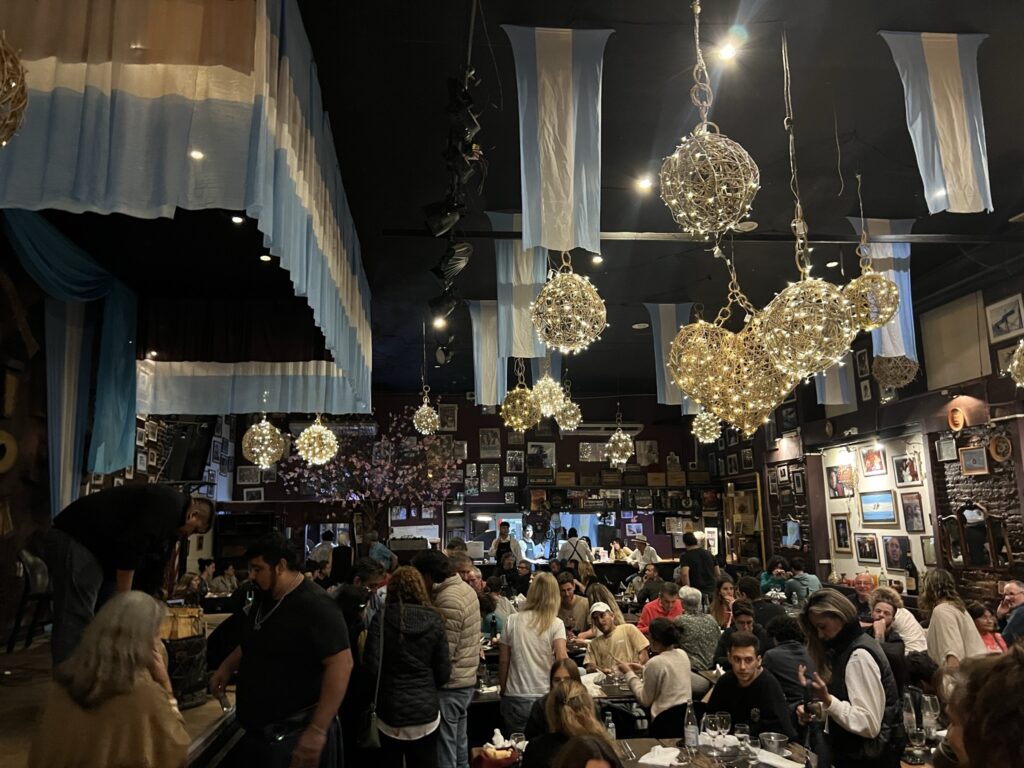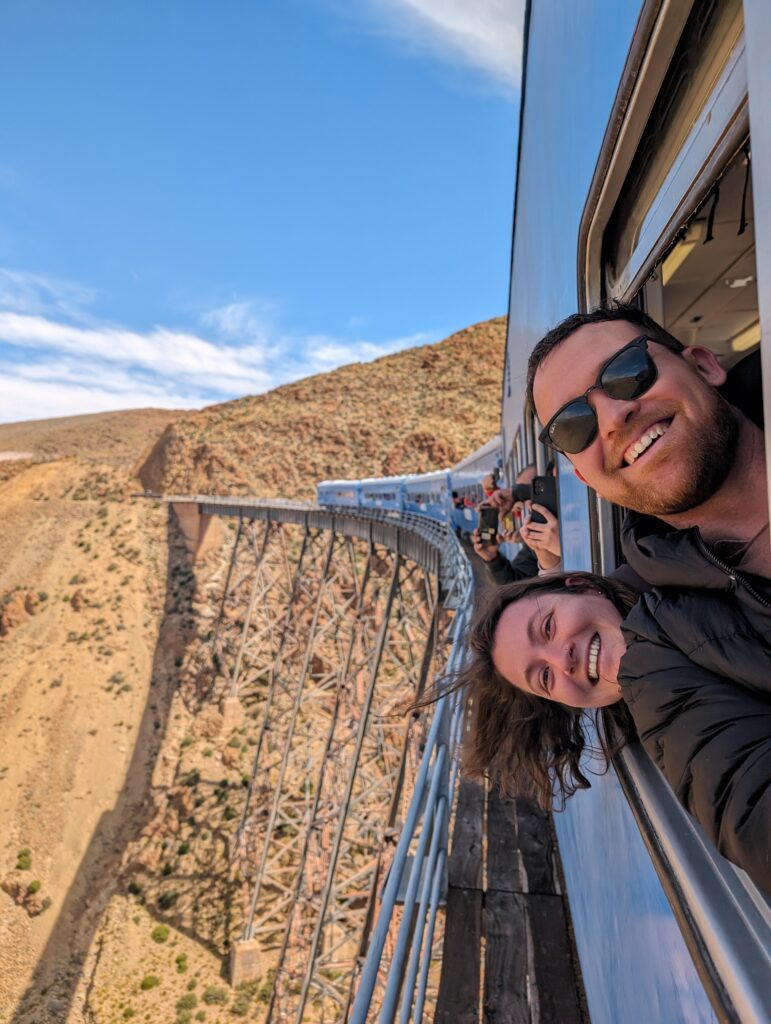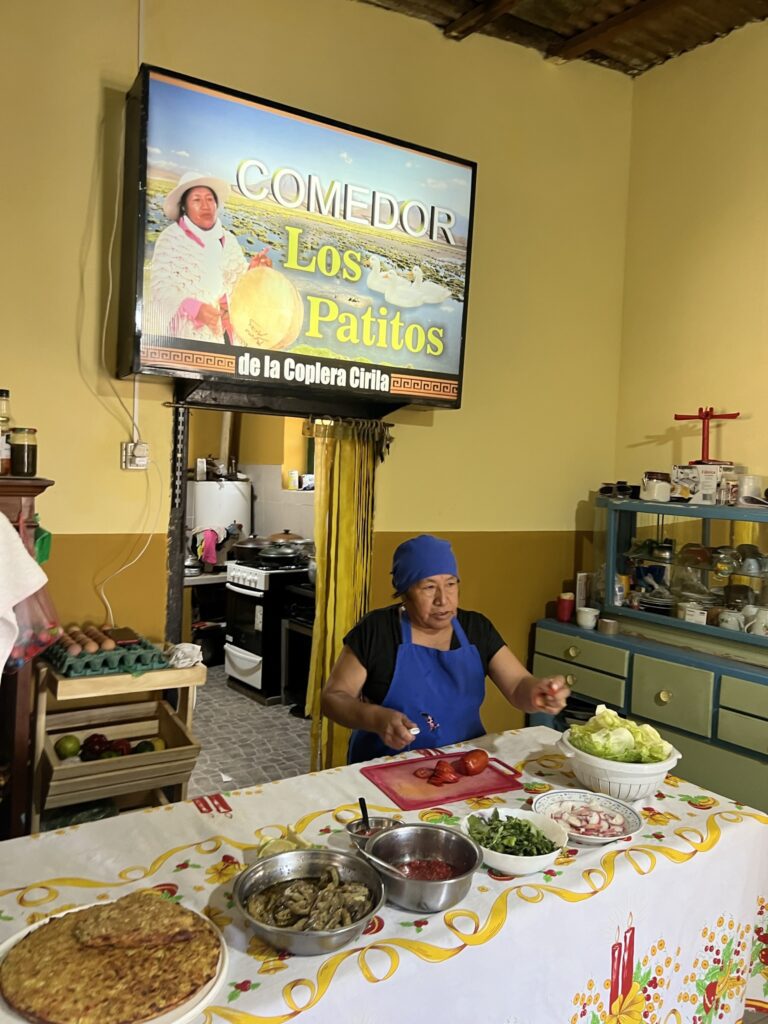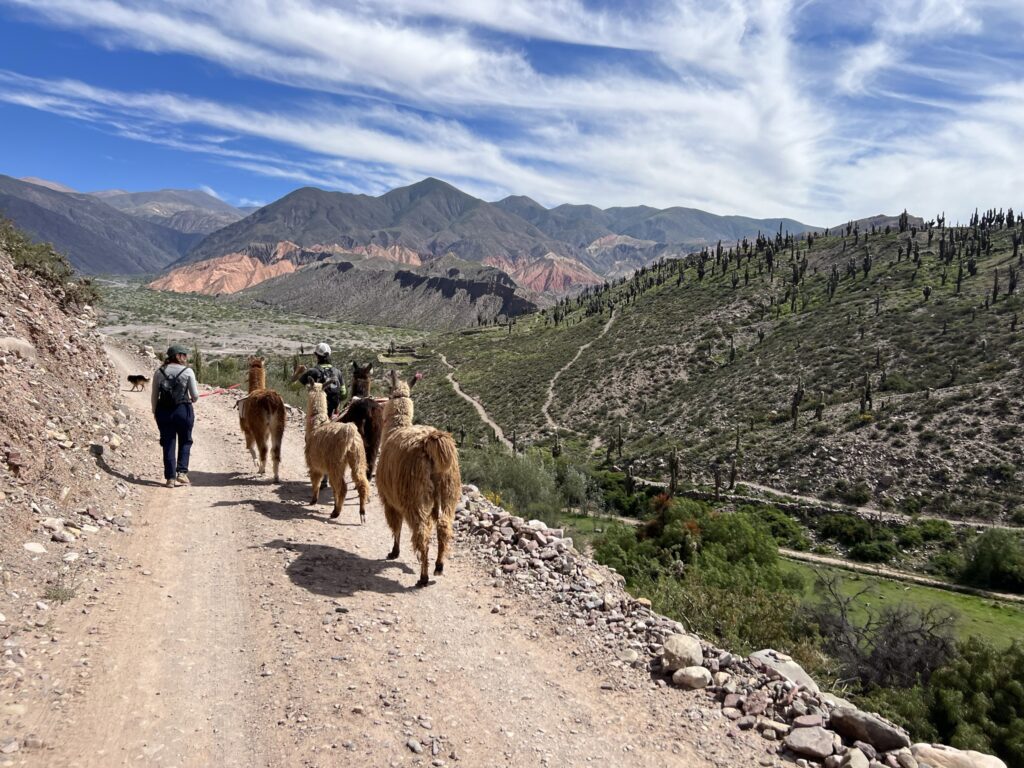Salta and Jujuy are provinces in Northwest Argentina, located on the border with Chile and Bolivia. We traveled here to learn more about the unique culture and see the Quebrada de Humahuaca.
Best Thing I Ate This Week
Cazuela de Cabrito at Peña La Vieja Estacion
Peñas are unique celebrations found in Northwest Argentina that combine regional folklore music with traditional dances while serving the region’s food and drinks. It was top on our list to visit one while we were in Salta, and we chose to go to Peña La Vieja Estacion due to its numerous positive reviews as well as its great location on the lively Paseo Balcarce.

When we arrived at the peña large groups were being asked to sit outside because the main room was at capacity. Fortunately for us, they still had one 2-person table available and it was centrally located with great views of the stage. As we ordered our meal, a traditional dance group started the evening with a lively performance that got the whole room clapping.
There was a brief break in the excitement when our meal arrived, and I was able to sample a few of the regional flavors. Salta is known for its delicious empanadas (closed at the top instead of the side), humitas, tamales, and a variety of goat dishes. I decided to try the cazuela de cabrito (goat stew) in addition to a tamal, empanada, and Salta beer. The goat stew was hearty, delicious, and a stand-out dish.


As we finished up dinner the main act for the night took the stage and led the crowd through a rowdy set of traditional music. They took requests from the primarily Argentine crowd that had the room singing along. They also interacted with the other South American guests and a few other travelers who, like us, had come from other continents, making us all feel part of the celebration. The outstanding live performances and unique flavors made this an unforgettable meal.
An Interesting Fact I Learned
The Colorful mountains of the Quebrada de Humahuaca are created based on diverse minerals
The Quebrada de Humahuaca is a Unesco-protected gorge located in the Jujuy provenance. It received protection due to its use as a crucial passage for the transportation of people and ideas from the high Andean lands to the plains, including along the Inca Trail. We decided to rent a car to better explore this region located about 3 hours from Salta and 1 hour from San Salvador de Jujuy.

Besides its rich pre-Hispanic civilizations, the Quebrada Humahuaca is known for its vibrant multi-colored mountains. We visited a few of the mountains to admire their natural beauty, such as the Cerro de los 7 Colores in Purmamarca, Paleta de Pintura in Maimara, and Cerro de los 14 Colores in Humahuaca.

While doing a guided hike to Paleta de Pintura, we learned more about what causes the mountains to appear so colorful. The diverse minerals found in the mountain cause the colors to appear over time due to geological processes. For example, as iron-rich minerals oxidize they become red, sulfur deposits appear yellow, chlorite can combine with iron oxide to appear purple, and copper can appear blue. Over many years these processes led to the beautiful mountains that can be explored in the region today.

My Travel Tip of the Week
Make sure to double-check your alarm for early wake-ups
To participate in the Tren a Las Nubes Tour from Salta, you must wake up early in the morning to board a bus that will travel 3 hours up to the San Antonio de los Cobres station near the border with Chile. Most mornings, I set an alarm so that I can be productive to start the day, and in this case, I accidentally set the alarm to my routine wake-up time instead of the tour time. Luckily, I happened to wake up 45 minutes before the tour departure, and we were able to hustle to the bus station to arrive with 15 minutes to spare.

What started as a panicked rush to the bus station turned into a wonderful tour, introducing us to the Puna, the second-highest plateau after Tibet. It was a fun experience to ride one of the highest altitude trains through the amazing high Andean environments, culminating with a voyage over the impressive Viaducto La Polvorilla. We were also able to sample some of the region’s unique food, such as the delicious humita salada (salty)/dulce (sweet) and croquetas de quinoa while in San Antonio de Los Cobres after the train trip. Moving forward, I will remember to double-check my alarm as this wonderful time could have been missed if luck hadn’t been in our favor.


My Additional Anecdote This Week
Cultural traditions are important but may be forgotten over time
A small town named Tilcara is a good center point for exploring the Quebrada de Humahuaca. While we stayed there we came across a company called Caravana de Llamas, which organizes llama treks through the region. We signed up for a half-day trek but were a little worried it might be a tourist trap activity.

However, our guide, Juan, was a descendant of the region and shared rich cultural information about the areas we traversed throughout the tour. We learned about the pre-Incan population that used to walk along the same trails that we did with their llamas to pass between the various geographic zones based on the time of the year. Juan also shared more about the traditional food in the region and how spicy flavors, such as the Locoto (pepper), could be found here but not in the rest of Argentina. These were consumed because they helped to bring more oxygen to the body at the high elevations of the area.

Additionally, he let us know that the majority of the youth population does not have an interest in continuing the traditions that have been passed down for centuries. Rather, they have become consumers of the global world due to the proliferation of the internet, and many leave the region to pursue job opportunities elsewhere. His concern is that in the future the old ways of the region, such as caring for the animals and land, will be forgotten.

I am grateful to have experienced and learned more about the traditions before they completely disappear in the future. It also made me reflect on how many places around the world are shifting towards a more global lifestyle and that many of the unique aspects that make travel so interesting may continue to disappear over time.

